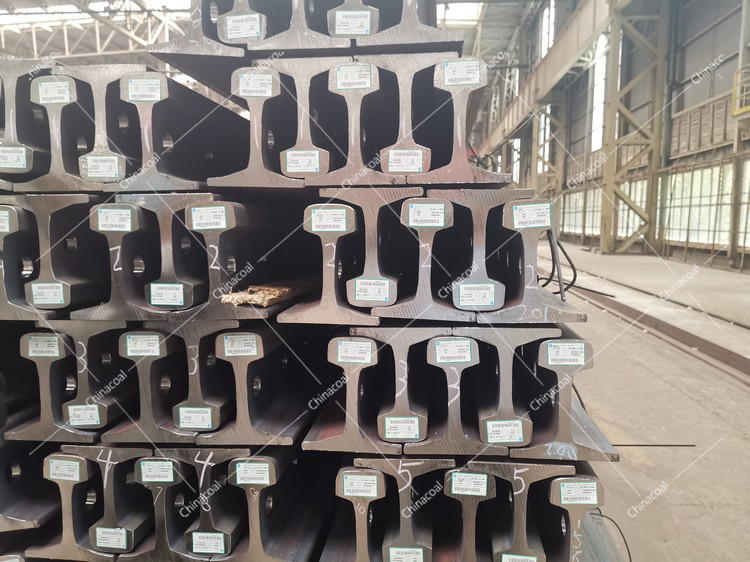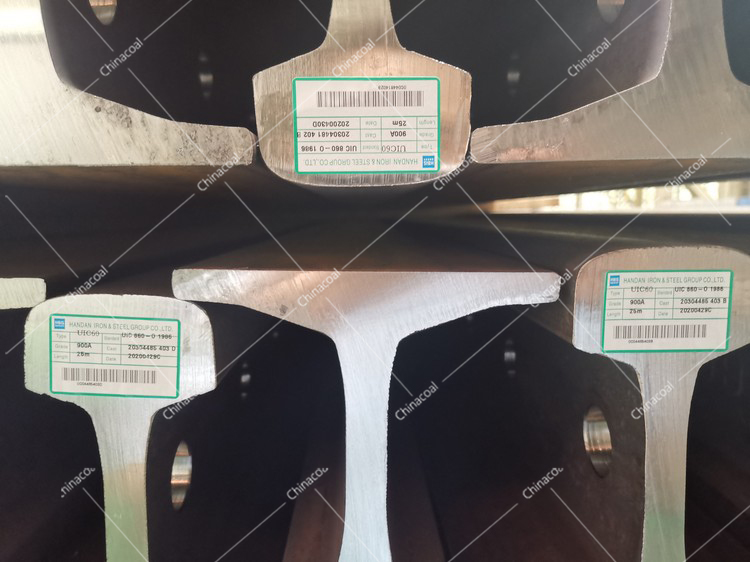
Steel Rail wear mainly refers to the side wear and wave wear of rail on small radius curve. As for vertical wear, it is normal in general, and increases with the increase of axle load and total passing weight. Improper setting of track geometry will accelerate the vertical wear rate, which should be prevented and can be solved by adjusting the track geometry.

(1) Steel Rail Side wear
Side wear occurs on the outer strand rail of small radius curve, which is one of the main types of damage on the curve. When the train runs on the curve, the friction and sliding of wheel and rail are the fundamental reason for the side wear of outer rail. When the train passes through a small radius curve, there is usually two-point wheel rail contact, and the side wear is the largest. The size of side wear can be expressed by the product of guide force and impact angle, that is, wear factor. Improving the conditions for the train to pass through the curve, such as using worn wheel tread and radial bogie, will reduce the rate of side wear.
From the perspective of public works, the rail material should be improved and wear-resistant steel rail, such as high hard rare earth rail, should be adopted. Its wear resistance is about twice that of ordinary rail and more than twice that of quenched rail.
Strengthening maintenance and repair, setting appropriate gauge, outer rail superelevation and steel rail bottom slope, increasing the elasticity of the line, and painting oil on the side of the rail can reduce the effect of side wear.

(2) Stell Rail Wavy wear
Wavy wear refers to the wavy uneven wear on the top surface of the steel rail, which is essentially wavy crushing. Wave wear will cause high wheel rail dynamic action, accelerate the damage of locomotive, vehicle and track components, and increase the maintenance cost; In addition, the violent vibration of the train will make passengers uncomfortable and threaten the driving safety in serious cases; Wave grinding is also a source of noise. Serious wave abrasion has occurred on some freight trunk lines in China. Its development speed is faster than side wear, which has become the main reason for track change
Wave mill can be divided into short wave (or ripple) and long wave (or wave). The ripple is a periodic irregularity with a wavelength of about 50 ~ 100mm and a wave amplitude of 0.1 ~ 0.4mm; The long wave is a periodic irregularity with a wavelength of more than 100mm, less than 3000mm and a wave amplitude of less than 2mm.
Wave grinding mainly occurs on heavy haul transportation lines, especially on coal and ore transportation lines. It also occurs to varying degrees on high-speed and high-speed passenger transportation lines, and it is also common on urban subways. On railways with high train speed, corrugation wear mainly occurs in straight line and braking sections. Wave abrasion mainly occurs on heavy haul transportation lines with low speed, and generally occurs in curve sections. There are many factors affecting the occurrence and development of rail corrugation, including rail material, line, locomotive and vehicle conditions and so on. Countries all over the world are committed to the theoretical research on the causes of rail waveform wear. There are dozens of theories about the cause of wave wear, which can be roughly divided into two categories: dynamic cause theory and non dynamic cause theory. In general, dynamic action is the external cause of rail corrugation, and rail material performance is the internal cause of rail corrugation. In fact, it is quite difficult to summarize all the causes of rail corrugation only by one aspect of analysis. Only by taking the vehicle and track as a system, studying the formation of various vibrations and conducting multifaceted and multidisciplinary research as a whole can we grasp the whole picture of the causes of rail corrugation.
Grinding steel rail is the most effective measure to eliminate wave wear. In addition, the following measures can slow down the development of wave wear: eliminating rail joints by continuous welding to improve the smoothness of the track; Improve the rail material, adopt high-strength wear-resistant rail, improve the quality of heat treatment process and eliminate the residual stress of rail; Improve the track quality, improve the track elasticity, and make the longitudinal and transverse elasticity continuous and uniform; Keep the curve direction round and smooth, set the superelevation reasonably, and apply oil at the working edge of the outer rail; The wheel rail system shall have sufficient resistance, etc.
